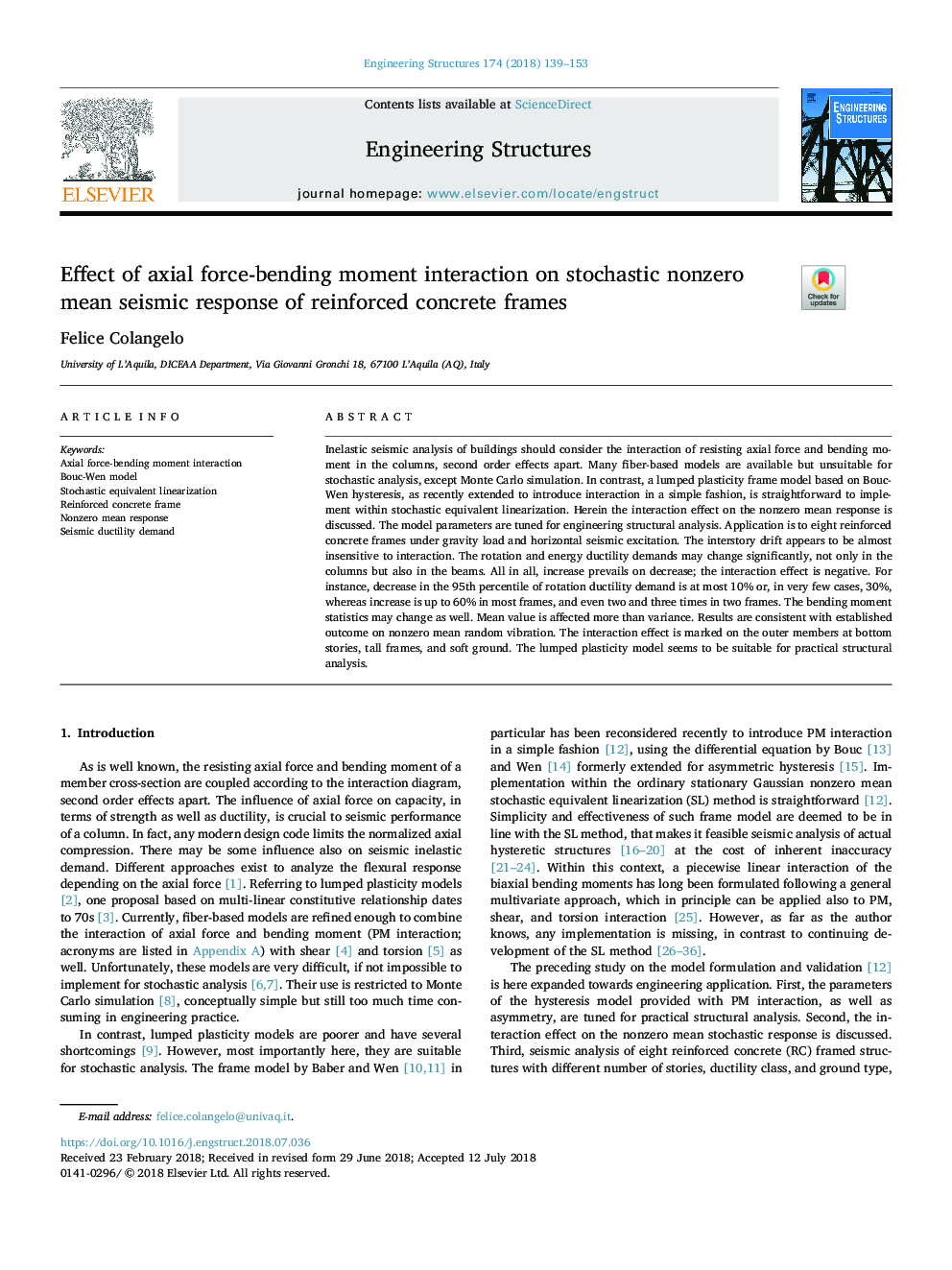| Article ID | Journal | Published Year | Pages | File Type |
|---|---|---|---|---|
| 6735279 | Engineering Structures | 2018 | 15 Pages |
Abstract
Inelastic seismic analysis of buildings should consider the interaction of resisting axial force and bending moment in the columns, second order effects apart. Many fiber-based models are available but unsuitable for stochastic analysis, except Monte Carlo simulation. In contrast, a lumped plasticity frame model based on Bouc-Wen hysteresis, as recently extended to introduce interaction in a simple fashion, is straightforward to implement within stochastic equivalent linearization. Herein the interaction effect on the nonzero mean response is discussed. The model parameters are tuned for engineering structural analysis. Application is to eight reinforced concrete frames under gravity load and horizontal seismic excitation. The interstory drift appears to be almost insensitive to interaction. The rotation and energy ductility demands may change significantly, not only in the columns but also in the beams. All in all, increase prevails on decrease; the interaction effect is negative. For instance, decrease in the 95th percentile of rotation ductility demand is at most 10% or, in very few cases, 30%, whereas increase is up to 60% in most frames, and even two and three times in two frames. The bending moment statistics may change as well. Mean value is affected more than variance. Results are consistent with established outcome on nonzero mean random vibration. The interaction effect is marked on the outer members at bottom stories, tall frames, and soft ground. The lumped plasticity model seems to be suitable for practical structural analysis.
Related Topics
Physical Sciences and Engineering
Earth and Planetary Sciences
Geotechnical Engineering and Engineering Geology
Authors
Felice Colangelo,
